Released earlier this year, the Transmitter Carbon joins the Sonder range as a fun-loving plus hardtail. Rachel has been spending the last four months testing one for Singletrack, and has been playing around with different wheel, tyre and fork setups to explore the limits of this versatile frame. Over to Rachel for the full review.
Sonder – the bike arm of Nottingham-based outdoor equipment Alpkit – has made quite a name for itself in its first couple of years. Originally a collaboration with Brant Richards and now under the stewardship of Neil Sutton, it’s been going from strength to strength with a rapidly expanding lineup.
The Transmitter is one of three hardtails offered by Sonder. As you might expect from Alpkit, the fully rigid Frontier and 29er Broken Road are designed with long journeys and bike packing in mind. In contrast, the Transmitter plus hardtail is more aimed towards full-out Type1 fun seekers with its slacker geometry and 130mm of front end boing. Sonder originally launched the Transmitter in 2015 with an alloy frame, with the Transmitter Carbon joining the lineup earlier in 2017.
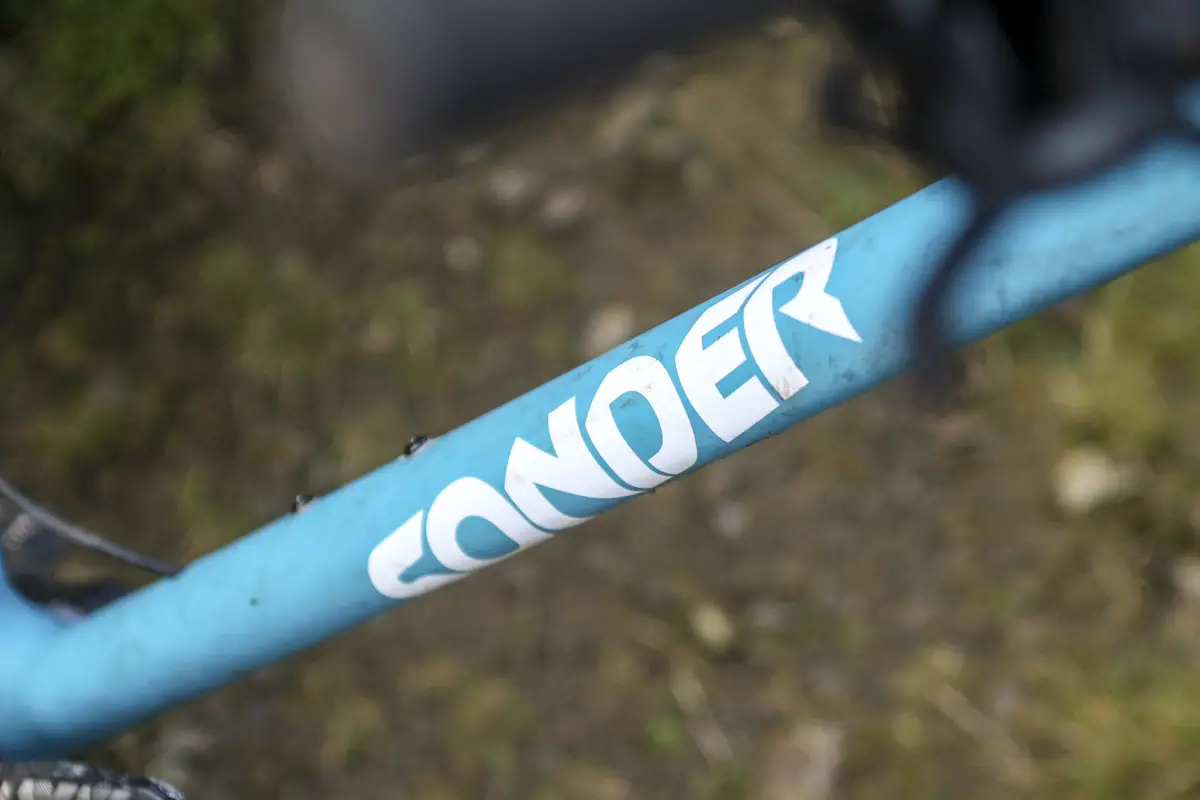
The Transmitter Carbon can be had as a frame (£749), or in one of five complete bike options starting from a very reasonable £1,499 (SRAM NX and Rock Shox Recon fork) and going up to £3,199 (SRAM XX1 Eagle and RockShox Pike). Our review bike, the GX Revelation build, sits in the middle of the range at £2,249 (with stock alloy wheels). Like-for-like the alloy Transmitter frame and bikes are around £300 less than the carbon variants. In addition to the test bike you see here, I also spent some time aboard a non-Plus ‘burly’ build with a 150mm Yari up front and more aggressive 2.6in tyres for a point of comparison.
Latest Singletrack Merch
Buying and wearing our sustainable merch is another great way to support Singletrack
The Carbon is available in sizes small, medium and large with a reach of 410mm, 430mm and 450mm respectively catering for rider heights from 5ft 2in to 6ft 2in. The alloy version is available in an XL size with a reach of 470mm but at present Sonder has no plans to make a Carbon XL due to the high costs of using exclusive carbon moulds.
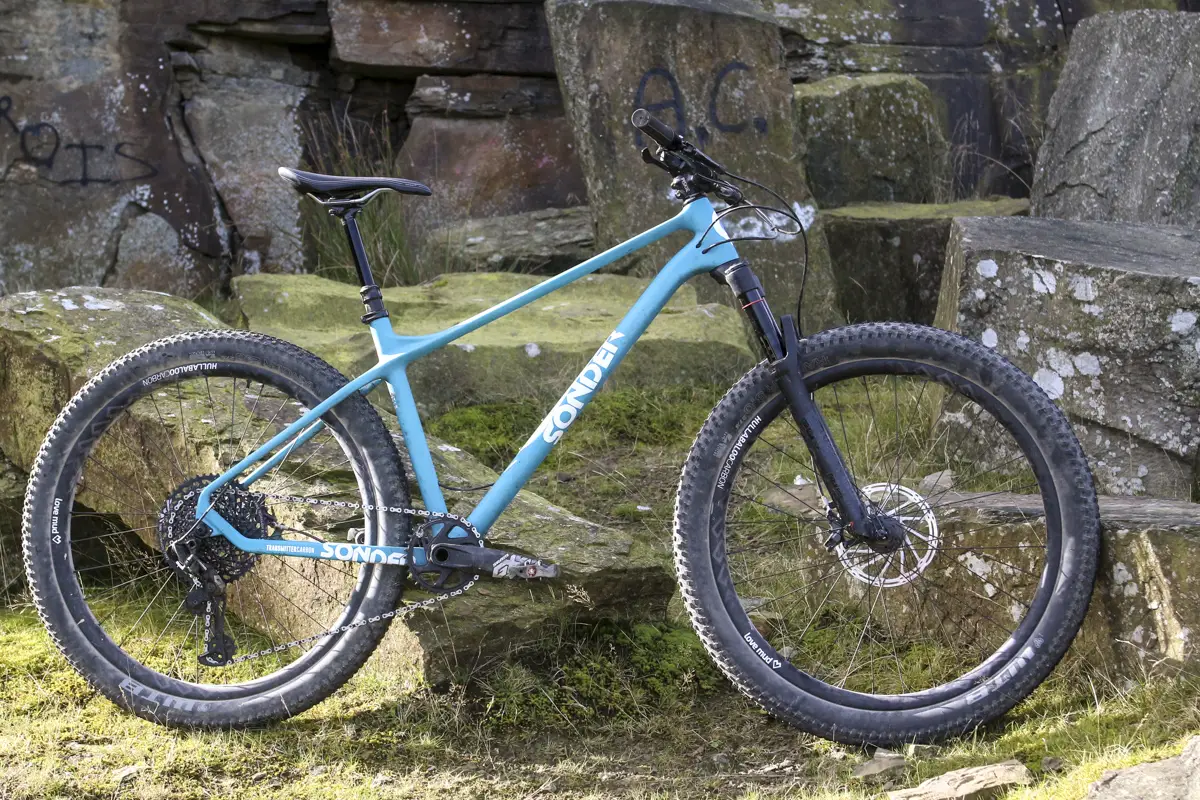
The Bike
The Transmitter Carbon has some really smart design features that contribute to some great aesthetics and improve function. It’s a bike that looks beautifully simple: well proportioned, clean straight lines and eye-catching, unpretentious colour and graphics (it’s available in blue, green and ‘raw’ – a black-grey).
The flattened top tube is very sleek and smooth. More importantly, this increases vertical compliance and maximises lateral stiffness of the frame. There’s been a lot of thought gone into the tube junctions too. The flow of the top tube into the seat stay is beautifully slick and the shaping of the junction of the seat and chain stays keeps the rear brake on the inside and out of harm’s way and also allows for lighter seatstays.
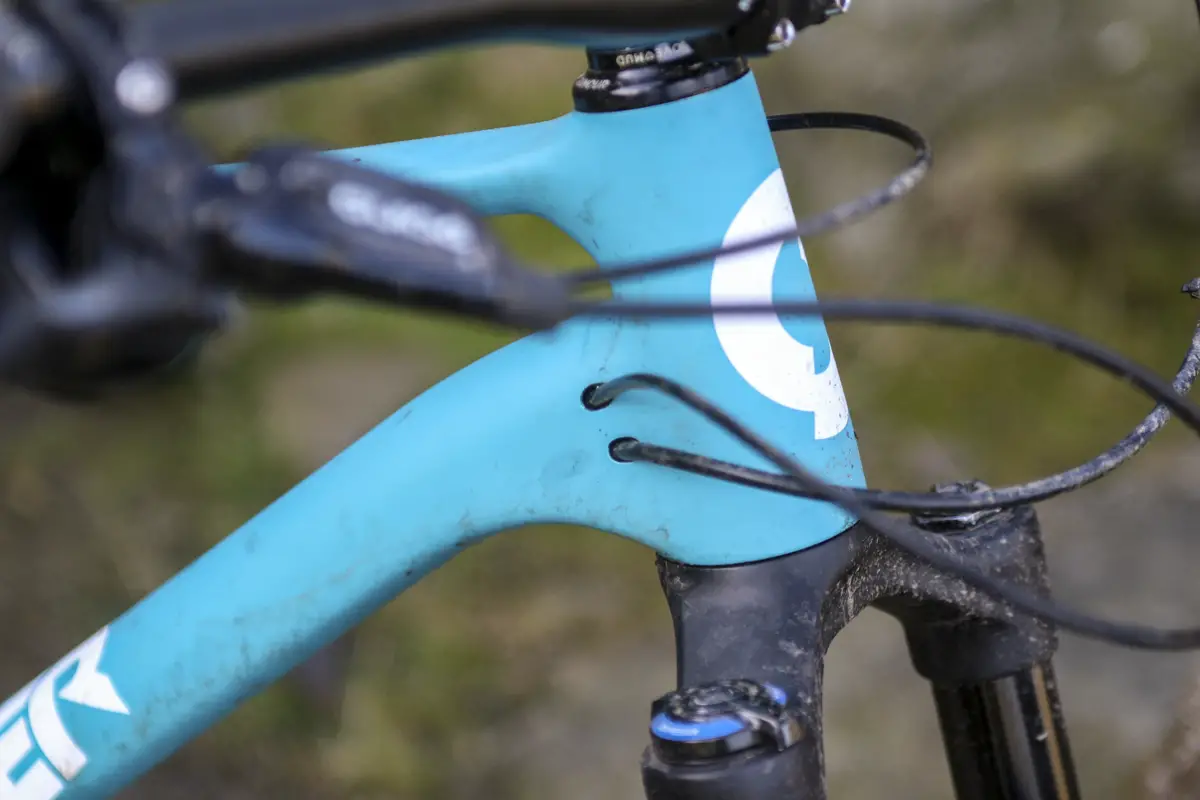
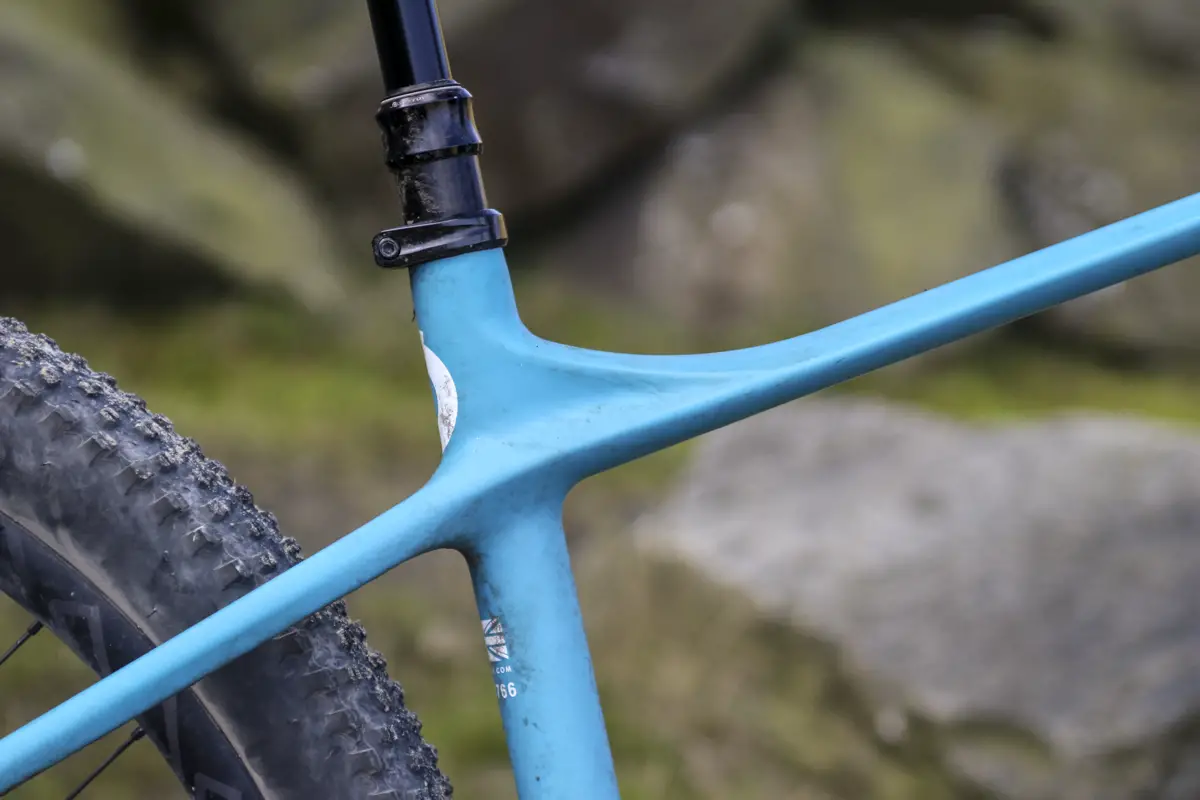
Cables and hoses are internally routed through neat little ports that are positioned to make for a tidy finish. After four months of riding there’s none of the usual cable rub on the head tube. The cables are fully lined through the frame so don’t rattle in the downtube or let much crud in. Aside from a pair of bottle cage bosses on the downtube, there’s nothing else to spoil the lines of the frame.
Designed around a 780mm wide bar and 35mm long stem, the stand out figure of the Transmitter Carbon’s geometry is the 65° head angle – that’s slacker than most modern enduro bikes. Combined with a 73° seat angle, 42mm bottom bracket drop and 425mm chainstays, it’s designed to keep things nicely tight and well-balanced. The lowered top tube gives lots of room to move with 765mm stand-over height on the medium.
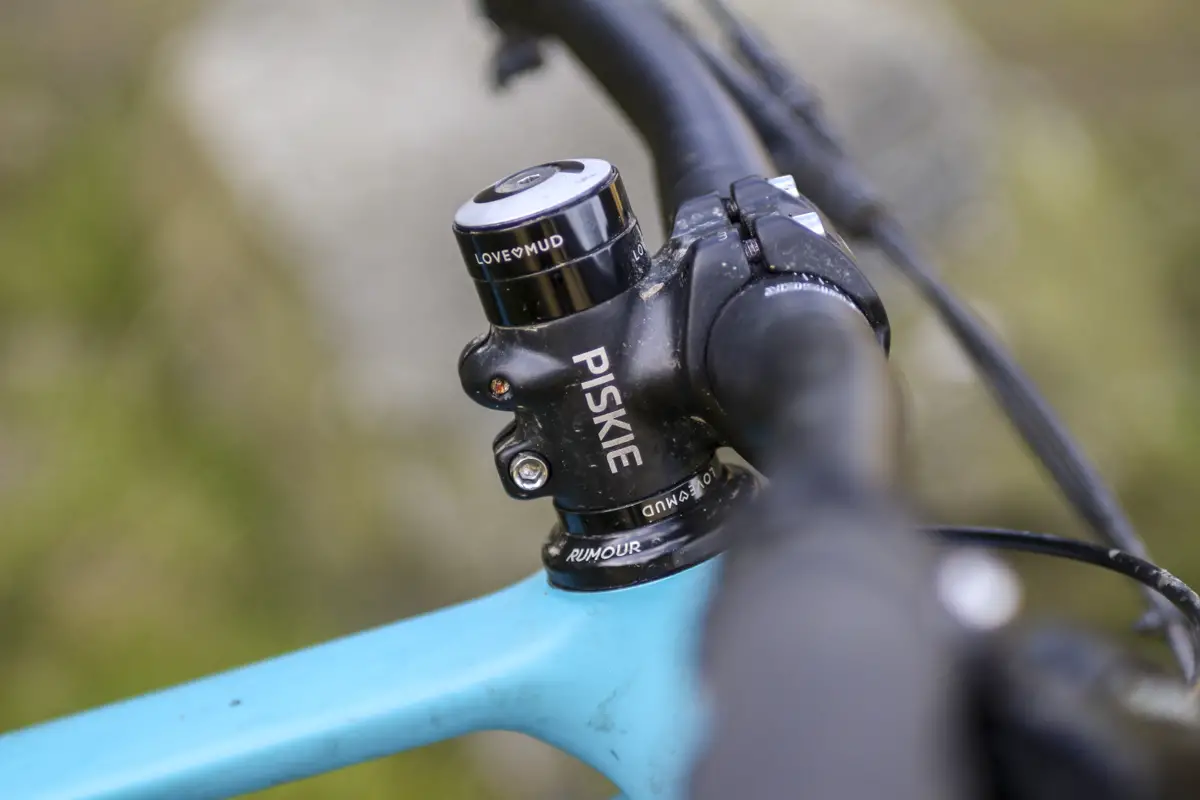
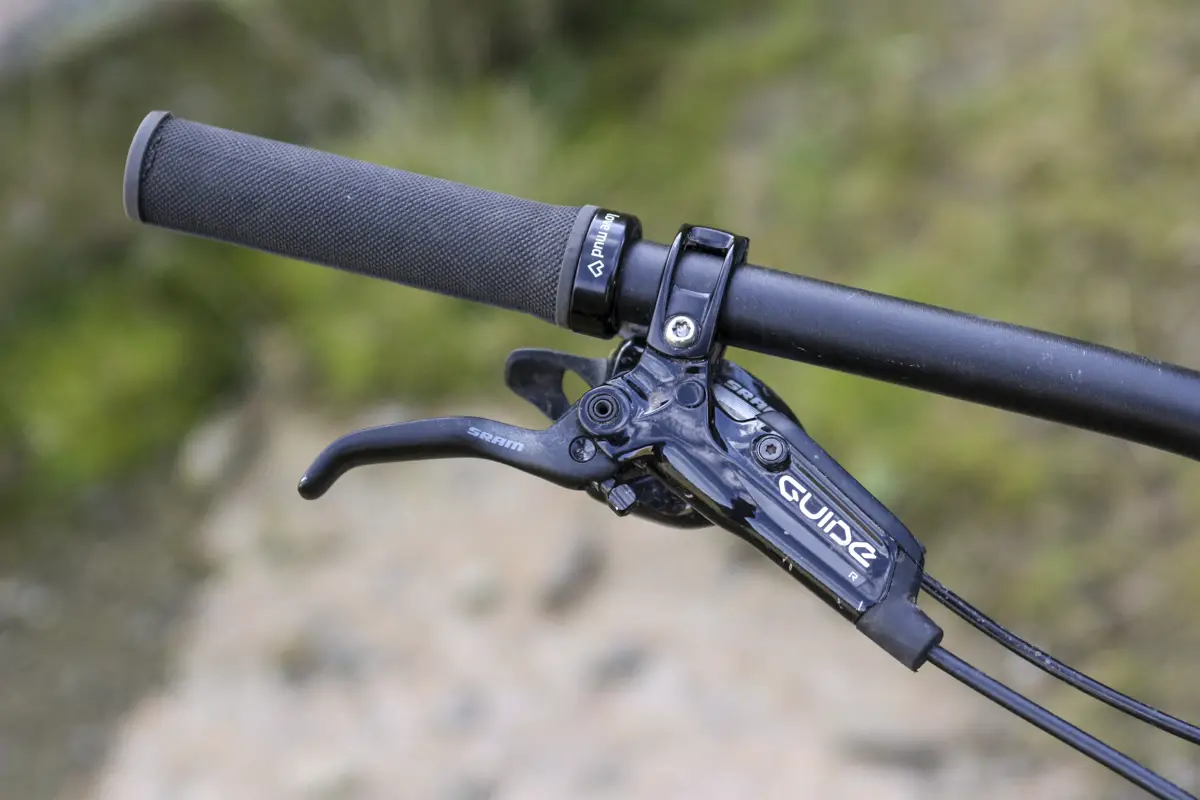
The 120mm head tube length and 608mm stack of our medium test bike is the same as on the large frame (the small has a 10mm shorter head tube). Combine this with the 20mm rise Love Mud bars, and the grips do sit high. As a rider at the lower end of the height-for-size continuum (I’m 5ft 6in which is the lowest of the recommended height range for the medium), this was potentially going to limit my saddle-to-bar drop and therefore how much weight I could get over the front end.
The standard Transmitter Carbon builds are equipped with Sonder’s Love Mud Rumpus 650b+ wheelset, which boasts a 45mm internal width. Our bike came with an upgrade to the Hullabaloo carbon wheelset (35mm internal) adding stiffness and dropping weight over the Rumpus (an unverified 250g lighter than the 2.5kg Rumpus wheelset). Both wheelsets feature sealed cartridge bearings and a four-pawl freehub. Stock tyres are WTB Ranger (3.0in front and 2.8in rear) and come set up tubeless. Front and rear Boost axles make room for the Plus wheelset. While in theory with that amount of clearance you can also fit a 29er rear wheel, Sonder doesn’t recommend this as it’ll limit your tyre clearance and add height to the BB.
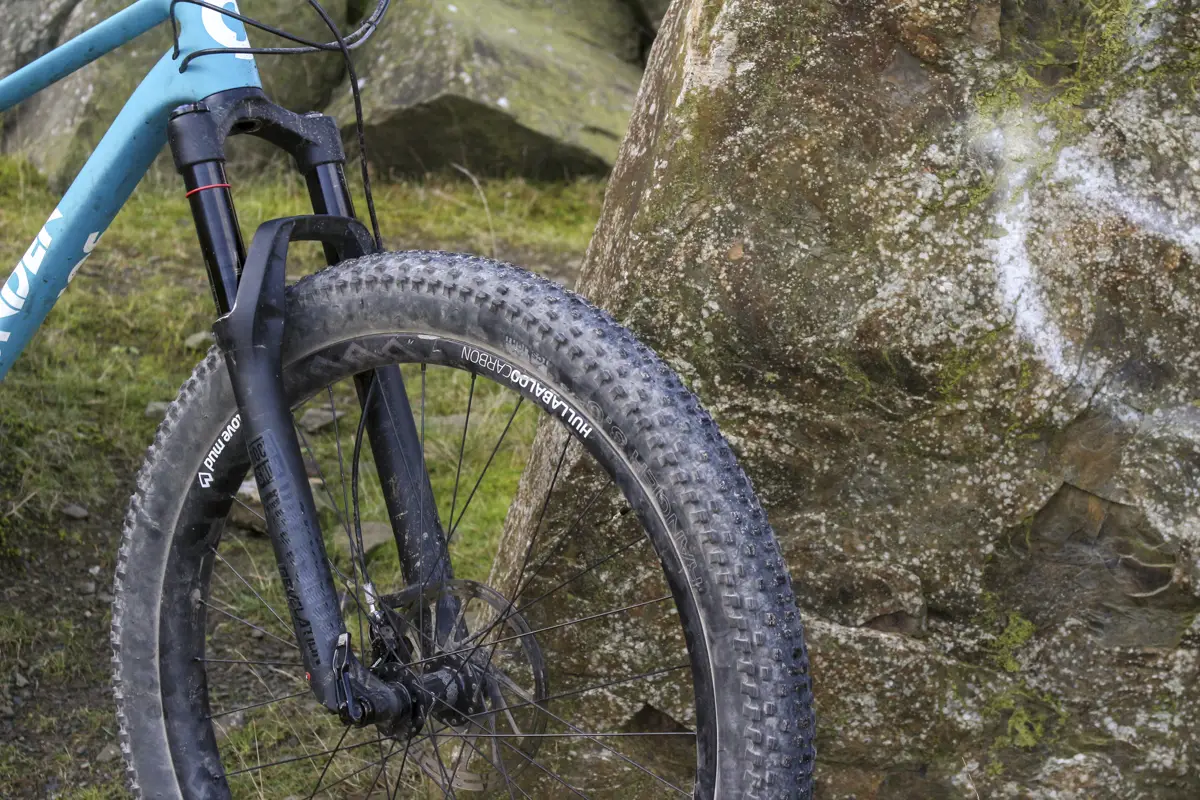
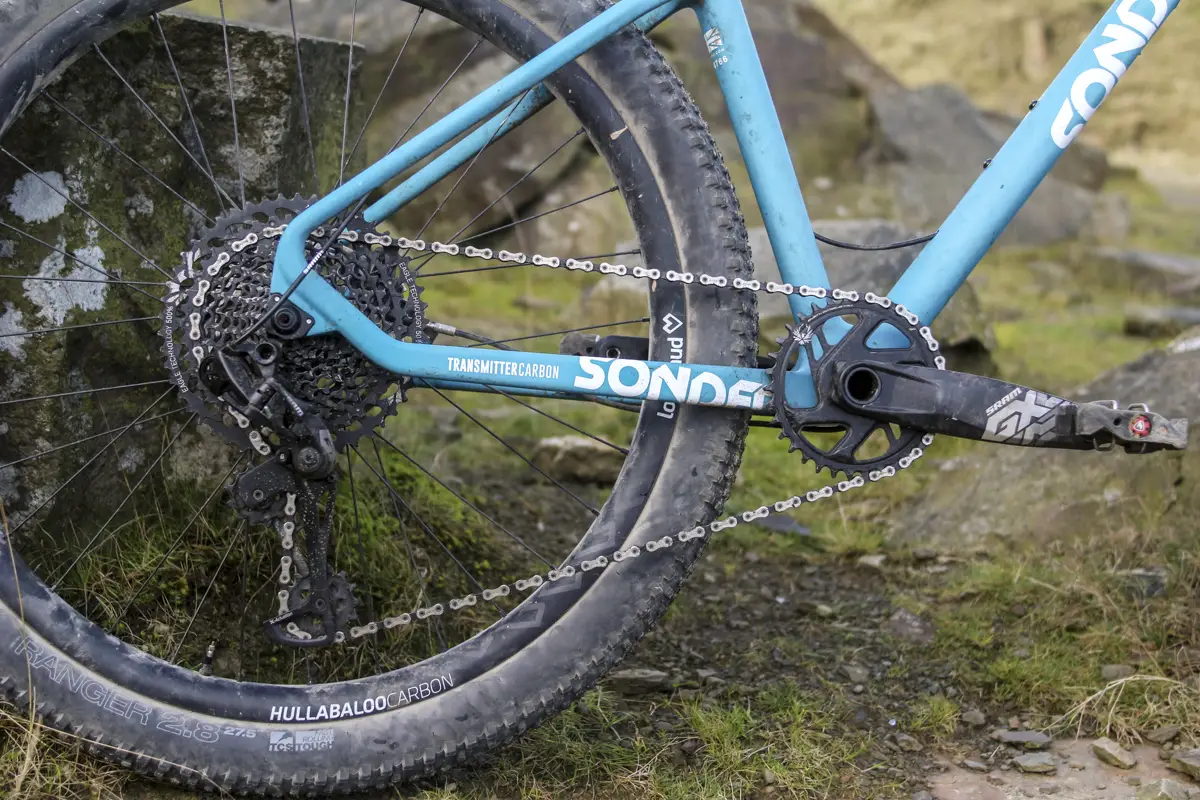
Our bike was equipped with a 29er RockShox Revelation RC 130mm fork (the 29er fork is there to accommodate the 27.5+ tyre). For a bike begging to be ridden through the British winter it’s a joy to see a good o’ external BB fitted. For the price point the RockShox Reverb dropper post is a real bonus too alongside the immensely popular 12 speed SRAM GX Eagle and RS Guide brakes. Love Mud bars, stem and saddle finish off the build. With the carbon wheel upgrade our bike tipped the scales at 11.66kg/25.6lbs, pretty impressive for a hardtail with a big(ish) fork and plus tyres.
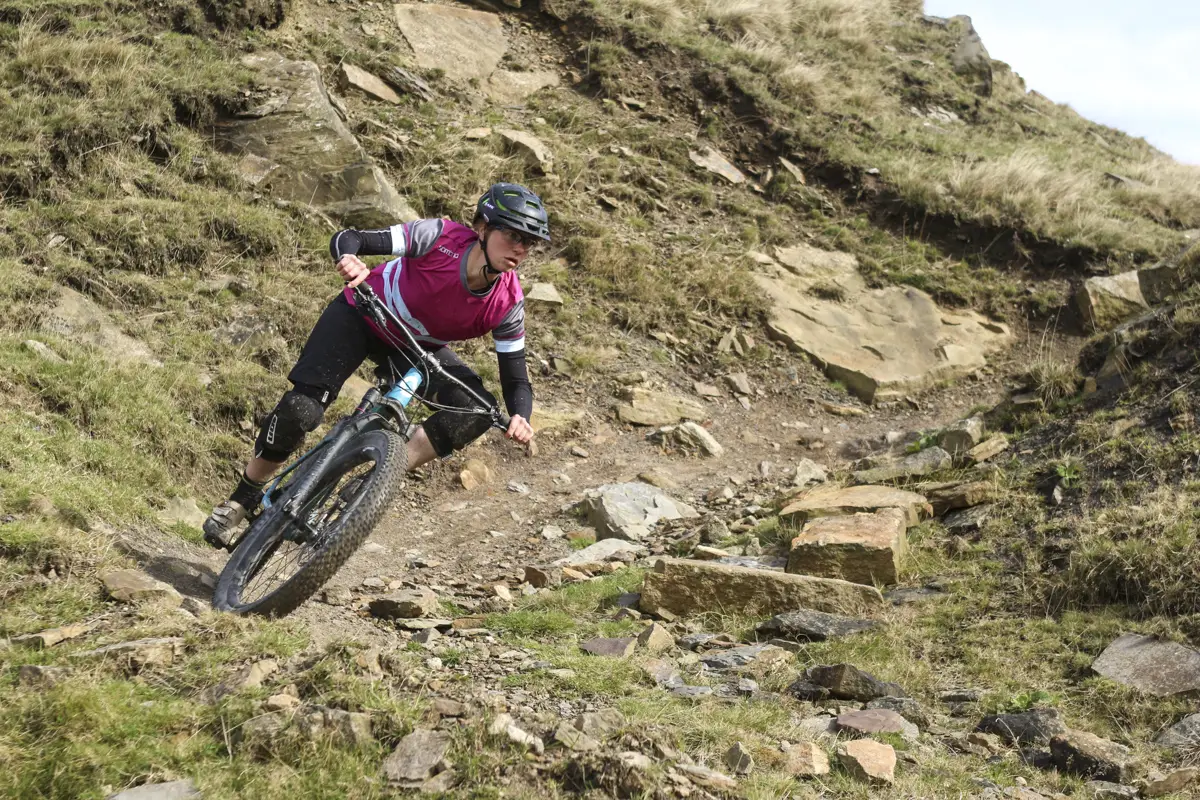
The Ride
As expected, I found the front end of the medium too high so I swapped out the riser bar for a flat one and switched around the spacers to get the front end as low as possible. This got me close to the height I wanted, but a shorter head tube would give more scope and remove the risk of hitting the levers on the top tube. I also needed to swap the 150mm Reverb for a 125mm dropper post so I could reach the pedals without clogs.
Being on the border of bike sizes I’m used to having to do a fair amount to get the setup of a new bike right, with annoying (and costly) component swaps. One of the big advantages of buying from Sonder though is that it’s direct-to-consumer and so build each bike is built specifically for the customer. This means your bike is specc’d to fit you and the majority of components can be swapped like-for-like for no extra cost.
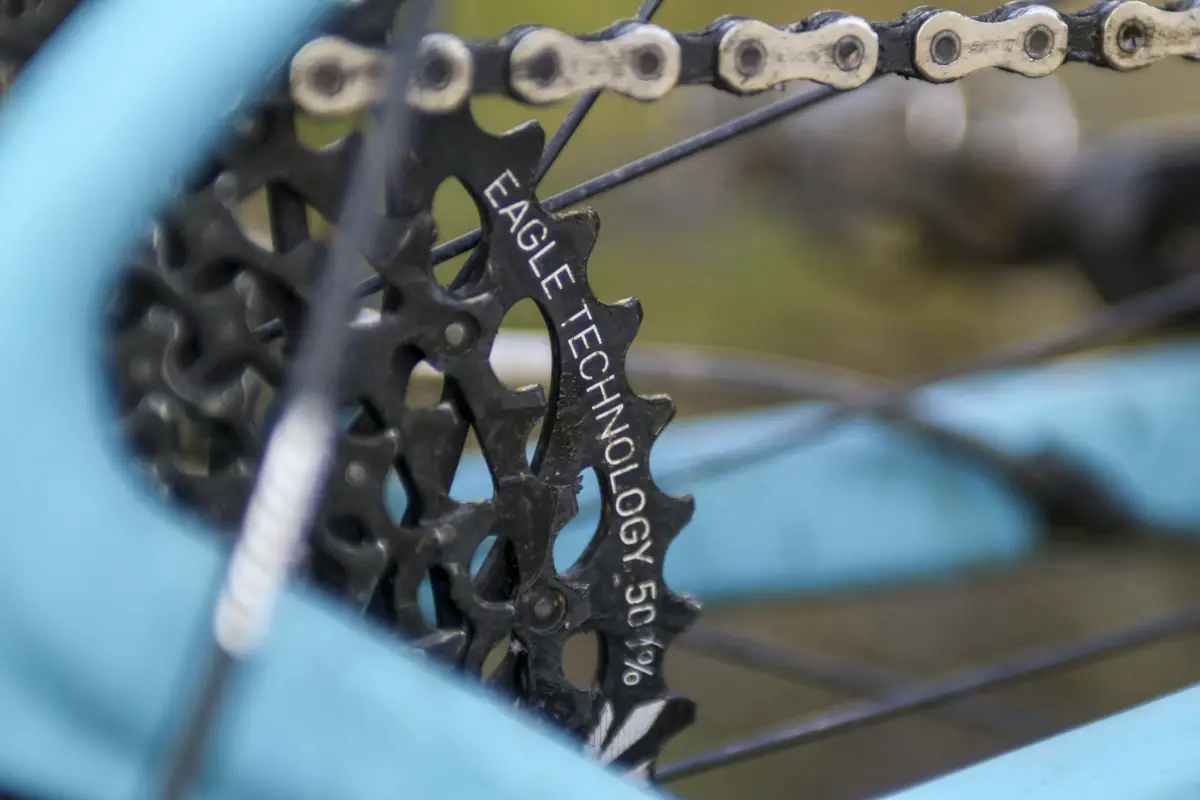
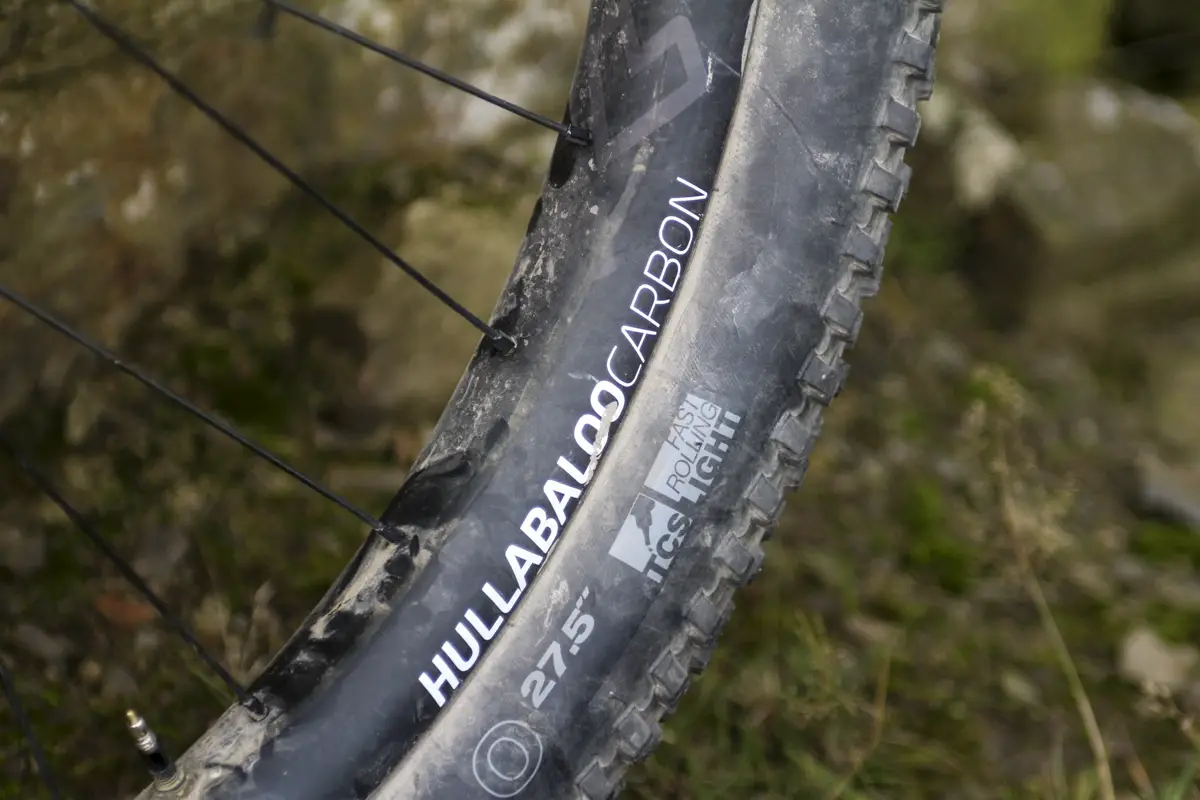
I’m used to the pedalling efficiency of an XC bike so was expecting the trail orientated Transmitter to feel a bit ploddy but I found it to be pleasingly sprightly to ride and reasonably nippy on accelerating too. I quite happily put in some big, long days on the bike without it feeling unduly like hard work – something the low weight of the bike certainly contributed to. The Transmitter is nicely balanced when you’re in the saddle and combined with its low weight and massive Eagle 10-50T cassette, is comfortable and efficient to climb on long steady drags. The enhanced traction of the Plus tyres also allow for more efficient riding over the small, rough bits that can be tricky to ride efficiently on a regular hardtail.
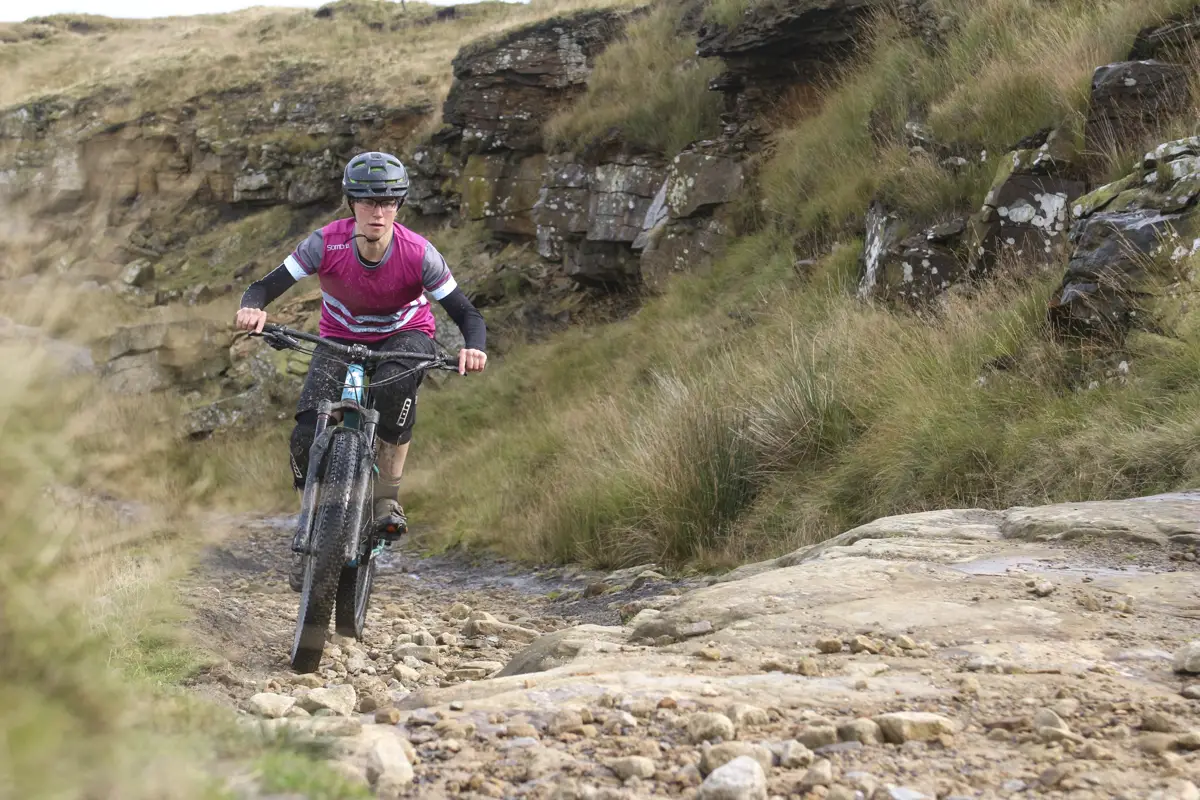
On steeper and technical climbs the Transmitter doesn’t perform as well as the slack head angle, shorter chainstays (and for me the high front end) make it difficult to keep the weight over the front wheel. Even perched on the very tip of the saddle I found it difficult to keep the front wheel from lifting, and getting enough weight over the front on steep switchback turns was particularly difficult. On the positive, the thing is so light it’s dead easy to shoulder for some hike-a-bike.
The standout area of performance of the Transmitter is its handling on flow trails and the faster you ride it the better it handles. The bike instantly puts you in a balanced position without having to think about it and the combination of the Plus tyres and the low top tube makes it incredibly easy to lean into corners. Even with the saddle up (gasp!) there seems to be tonnes of room to move around and get maximum grip from the trail.
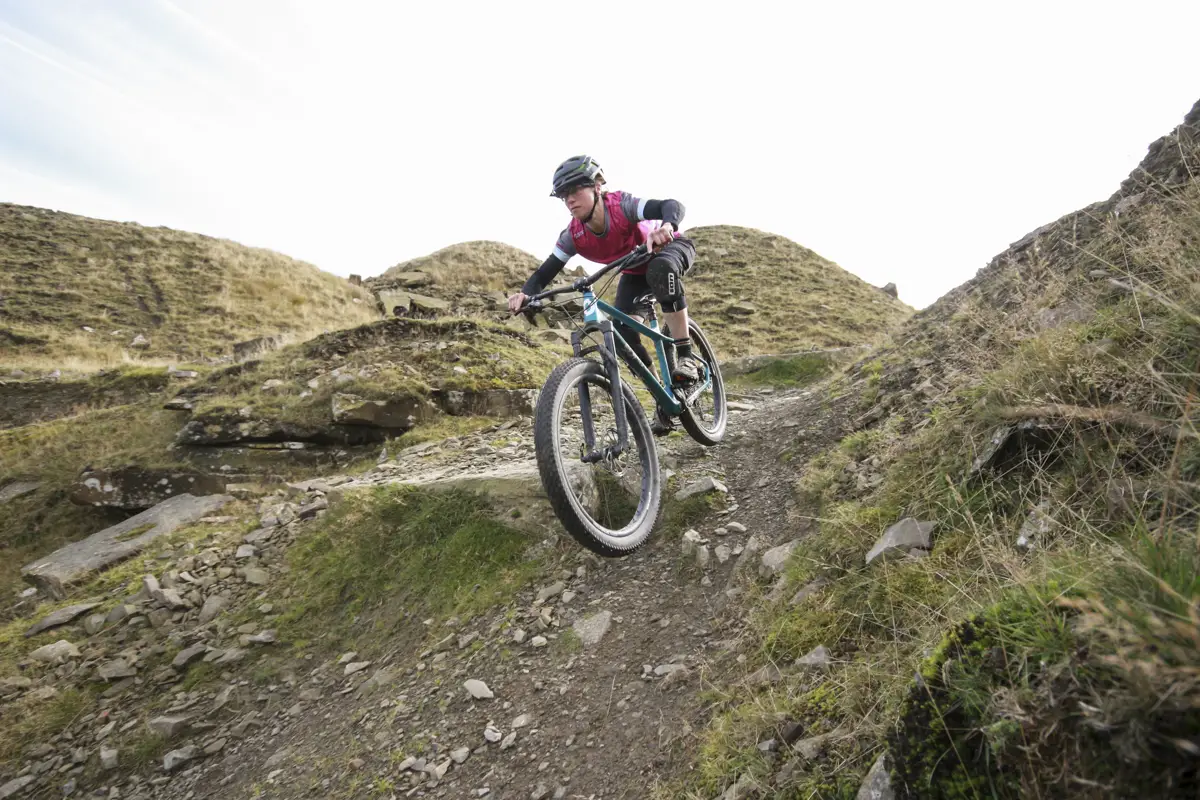
The Transmitter is similarly stable and capable on the downhills – even full-on DH trails. The stability from the geometry and comfort from bigger tyres mean it’s easy to forget you’re on a hardtail until something catches you out. In some ways the Sonder is a little too capable and it can easily outperform the 130mm Revelation fork and the low profile tyres. If you’re more gravity orientated, then more aggro tyres are a must, or you could consider going with the 150mm burly build. It’s worth noting that the geometry of the Transmitter doesn’t change with a 150mm 27.5in fork upfront as the overall length is very similar the 130mm 29er fork.
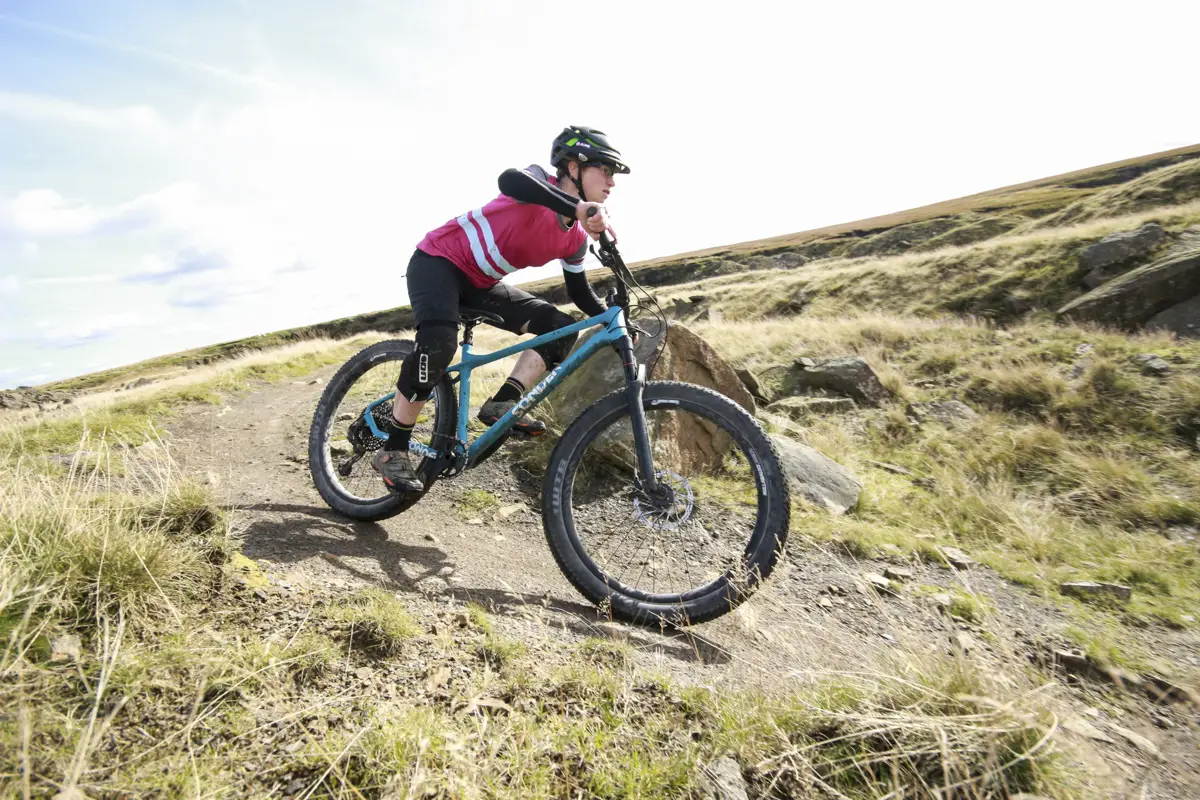
After lots and lots of riding I still remain undecided about Plus wheels. On hard-packed and mud-free trails they were tonnes of fun, adding speed, stability and comfort to the ride. The extra volume of the 27.5+ tyres really did seem to balance the manoeuvrability of a 27.5in wheel with the rolling speed of a 29er. But on natural terrain with mud and wet roots the handling became very sketchy. Whilst I wouldn’t expect a standard-width tyre with similar tread – such as a Maxxis Ikon or Schwalbe Rocket Ron – to excel in these conditions I wouldn’t expect to end up on my backside either, which was a common occurrence with the big volume WTB Rangers.
I did end up swapping the plus wheels for a slightly narrower wheelset with a variety of 2.5-2.6in tyres from Maxxis and WTB that featured much more aggressive tread. For me, this change made the Transmitter much more fun, especially on my usual natural UK trails. You give up some of the floaty suspension that the bigger volume plus tyres provide, but you get more wet weather traction and cornering predictability in return. Narrower wheels brought it more inline with the burly build, which will ship with the same 27.5″ Hobo wheelset as the Sonder Evol.
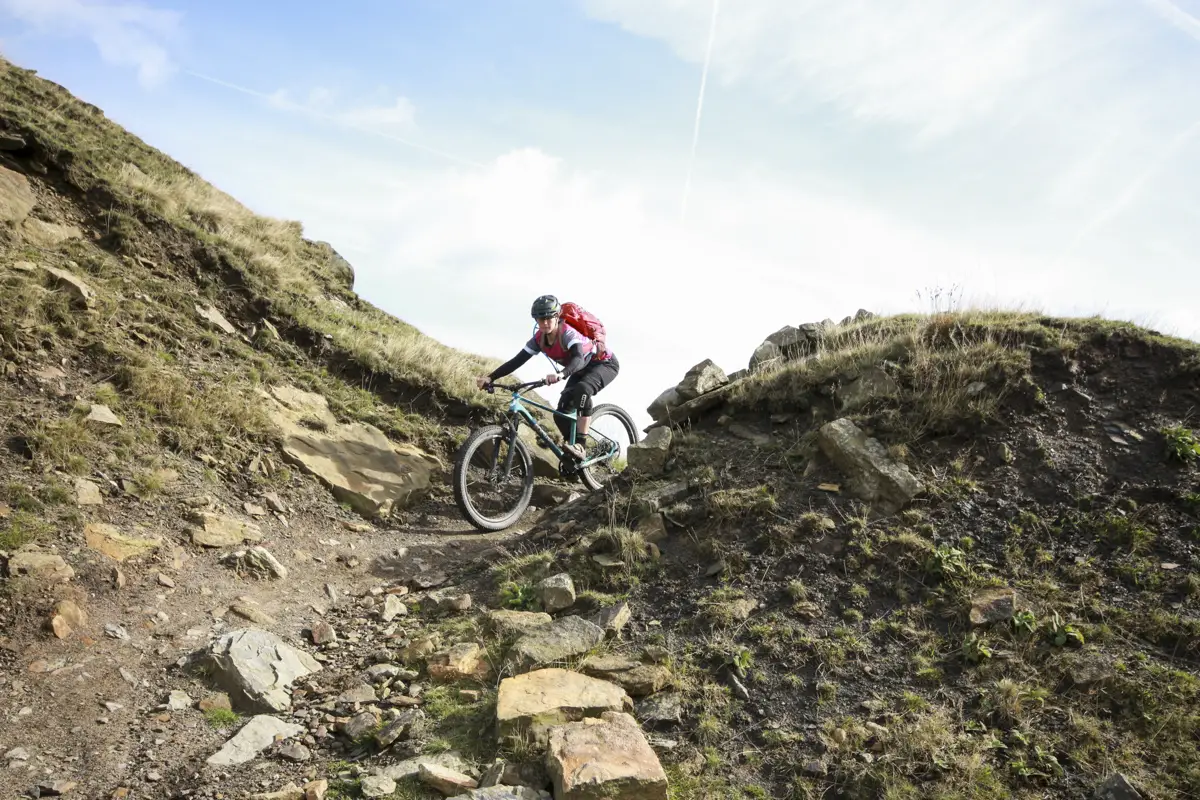
Durability Notes
The Transmitter Carbon was enjoyably low maintenance throughout the time I had it on test. This was my first experience with SRAM’s new GX Eagle 1×12 drivetrain, and although I occasionally found the jumps between gears were a little too large for my liking, I was left impressed with the overall function, with everything being totally reliable without need for constant tweaking.
The frame’s matt finish has held up well and it’s only acquired a couple of small marks after several months of heavy use. It’s worth noting that Sonder reports the carbon frame comes out stronger than the alloy version on lab-testing. Both versions come with the same five-year Alpine Bond Warranty.
A small issue I did experience was when swapping over the dropper I found it difficult not to catch the external housing of the hose on the frame ports. This left a few tooth marks on the hose I removed although not the one I fitted. I’m sure there’s a technique to this – the pre-fitted cables had no such marks – just one it might take a little time to get.
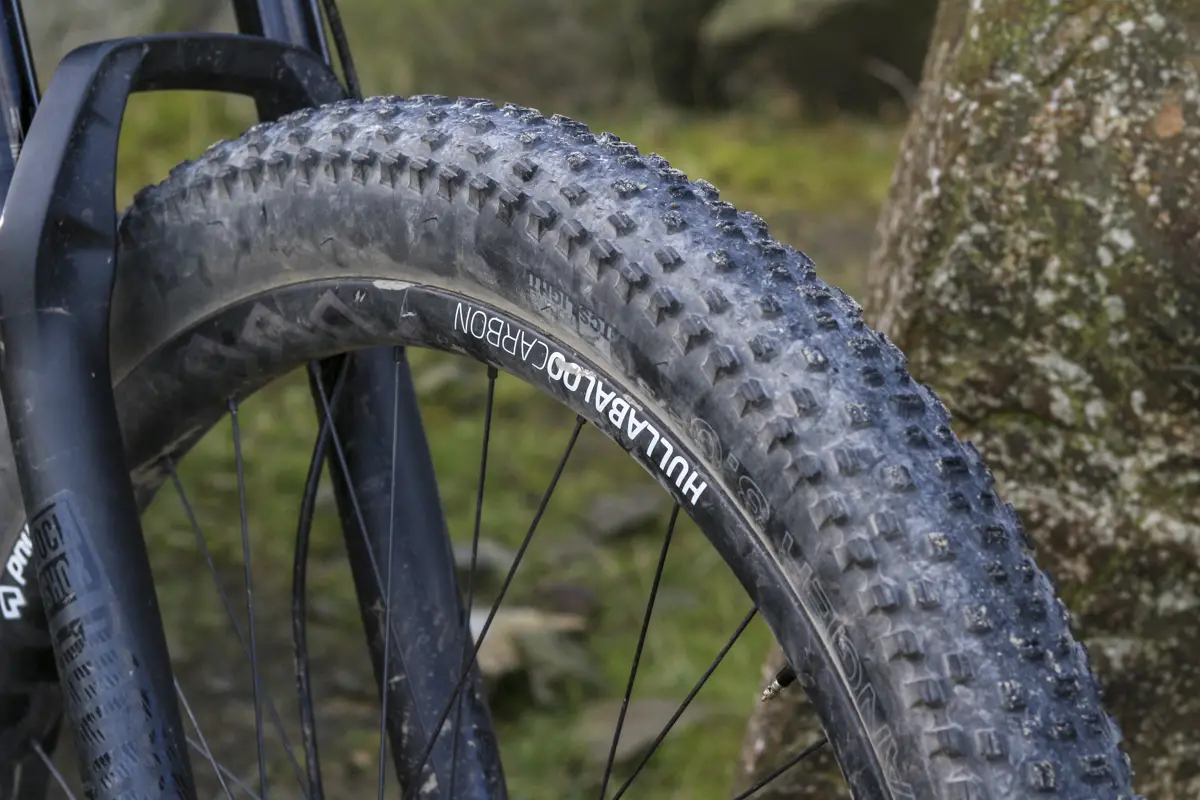
Three Things That Could Be Improved
- The slack head angle makes the front end wandery on steep techy climbs and cornering
- The long head tube makes for a pretty high front end particularly for a smaller rider on medium frame and there’s no XL to cater for riders over 6ft 2in.
- The WTB Ranger Plus tyres were great on fast, dry trails but less convincing in the mud and wet
Three Things We Loved
- Extremely stable at speed and feels really planted on steep and twisty terrain
- Incredibly easy to get a low centre of gravity and move around on the bike
- Lightweight and responsive – easy to pedal and comfortable to sling over your shoulder on a hike-a-bike
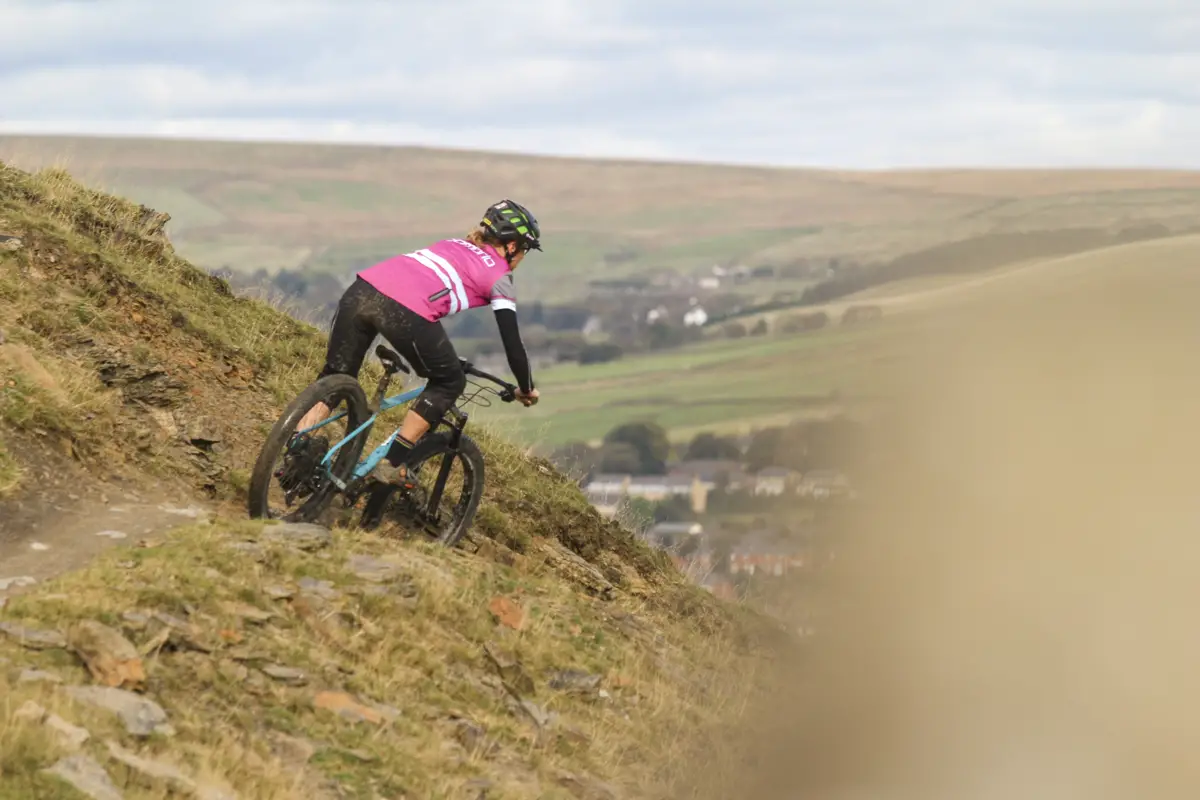
Overall
The simplest way to describe the Transmitter Carbon is that it’s a whole lot of fun. It’s incredibly capable on technical and flow trails whilst being light and balanced enough to forgo the uplifts and ride on the top and onwards to the next hills albeit it does struggle on the steeper climbs. It’s a well-balanced bike in many senses: its geometry, build and handling; its ability to hoon down the trails and pedal back up again, and its pricing too. Build options will give you the flexibility to spec the fork and other components to your riding preference and as well as your budget.
Plus tyres are not for everyone and as someone who prefers natural to trail centre riding I personally preferred downsizing from the 2.8in/3.0in stock tyres to something less wide but more aggressive. Given the internal rim width will take both then it’s less of a choice between a Plus or non-Plus bike and just a matter of running tyres appropriate to the conditions.
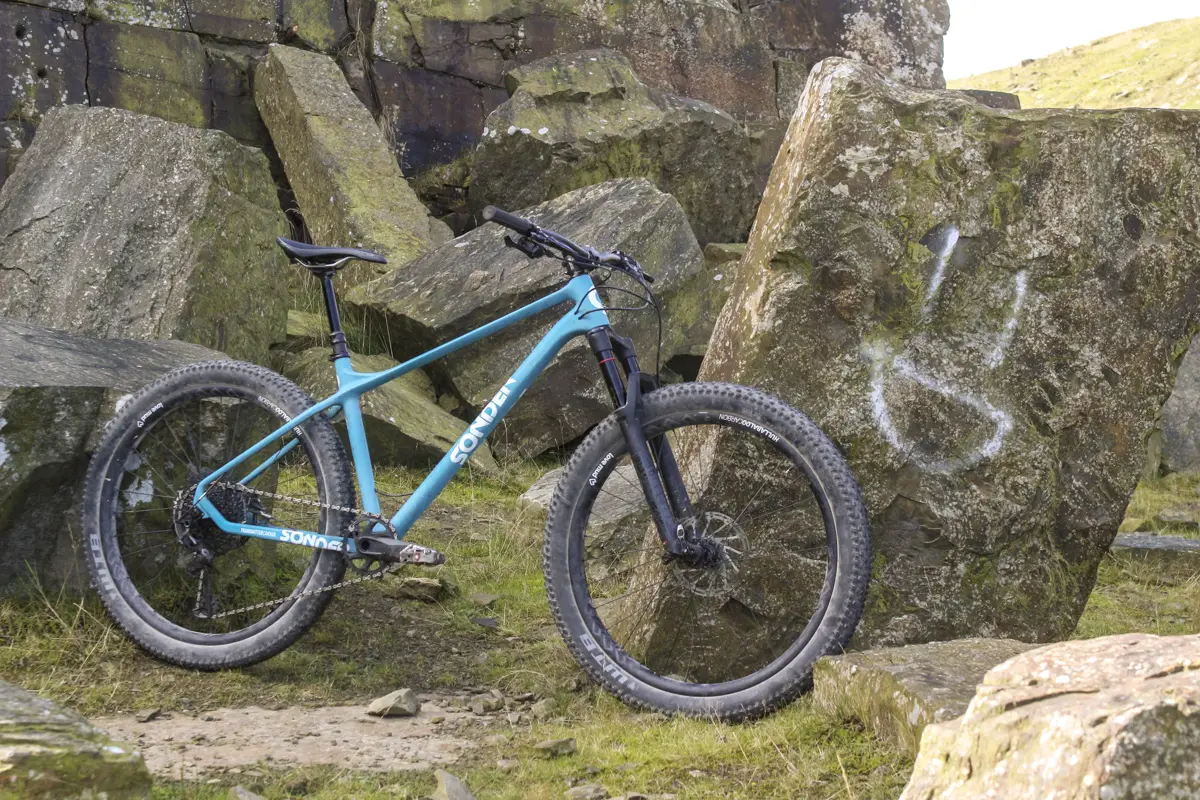
Sonder Transmitter Carbon SRAM GX Eagle Revelation Specifications
- Frame // Carbon Fibre
- Fork // RockShox Revelation RC 29/27.5+, 130mm Travel
- Hubs // Love Mud Hullabaloo, 110x15mm Front & 148x12mm Rear
- Rims // Love Mud Hullabaloo Carbon, 35mm Internal, 32h, Tubeless Compatible
- Tyres // WTB Ranger TCS Light Fast Rolling 3.0in Front & 2.8in Rear
- Chainset // SRAM GX Eagle 34t X-Sync
- Front Mech // N/A
- Rear Mech // SRAM GX Eagle 12-Speed
- Shifters // SRAM GX Eagle 12-Speed
- Cassette // SRAM GX Eagle 12-Speed, 10-50t
- Brakes // SRAM Guide R, 180mm Front & 160mm Rear
- Stem // Love Mud Piskie Stem, 35mm Long
- Bars // Love Mud Aspect Riser, 780mm Wide
- Grips // Love Mud Grabby
- Seatpost // RockShox Reverb Stealth, 150mm Travel
- Saddle // Love Mud Abode
- Size Tested // Medium
- Sizes available // Small, Medium & Large
- Claimed weight // 11.66 kg (25.62 lbs)
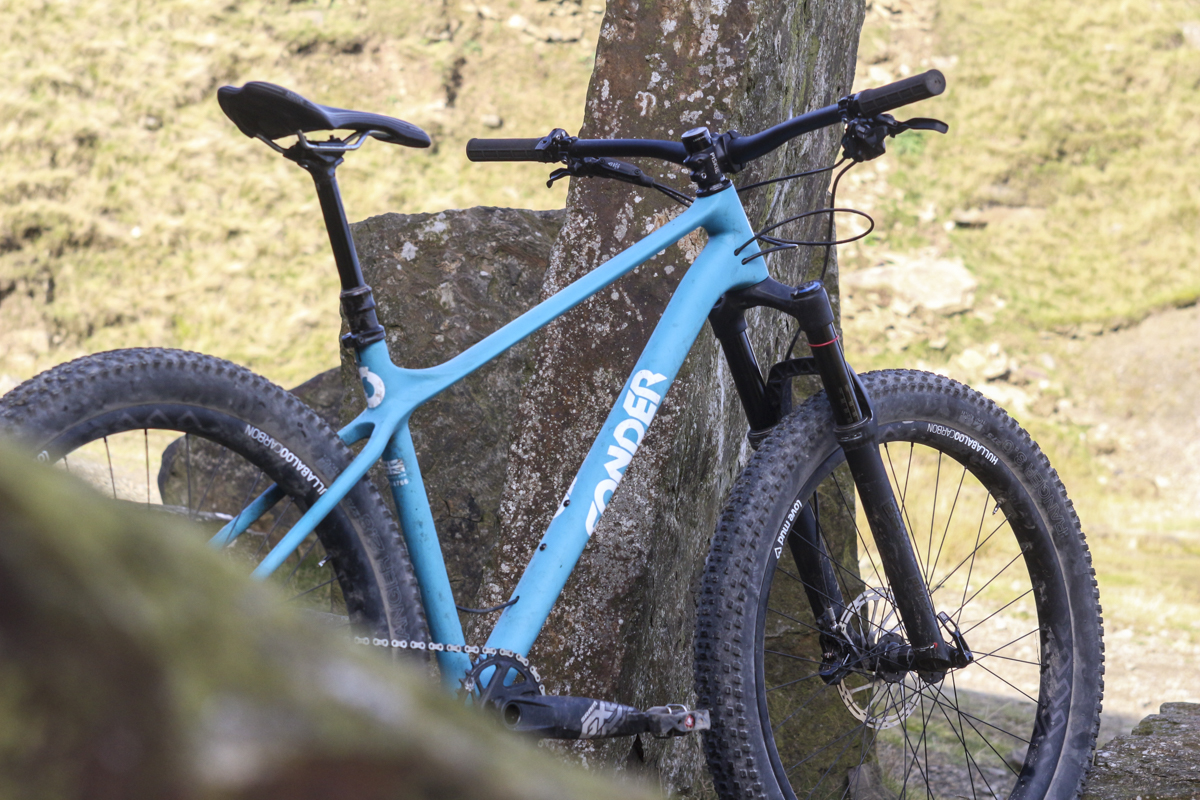




I’m not sure it’s fair to compare WTB Rangers with ‘more aggressive;’ conventional tyres. It’d maybe make more sense to pitch them against toothier plus tyres – there’s a 2.8 Minion DHF for example – with an equivalent 2.5. Stick a Minion 2.8 / Rekon 2.8 combo on and you get more grip but without losing the float of plus-sized tyres.
BWD – the point of this tyre / set up comparison is that these will be the two offered by Sonder once they have the 2.6” tyres in stock. Agree there’s loads of different combos to try!
Hmmm, it seems that some of the problems that you experienced with the bike is due to it being a medium.
Wasn’t there a small available to test? The small is recommended for riders up to 5ft 7in.
Ah, that makes a certain amount of sense. My general take would be that plus tyres are a bit of a blunt instrument, while more conventional ones lend a bit more finesse. Think sledgehammer as opposed to a dainty little jewellery hammer, or something like that.
Hi Jim. Not entirely size-related; the slacker head angle and shorter chain stays will always make a bike wandery on the steepest bits (and ace going down). It wasn’t just me that found this, even taller riding mates did.
But yes, I’m definitely on the smaller side of medium (recommended size starts 5’6″ for medium and small is up to 5’7″) so it wouldn’t have helped. I went for the medium over the small as I wanted the longer reach.
Wheelbase on the large is coming up small at 1,183, according to their website. Surprising, as it’s billed as long, low etc.
I’m 5’6″ and have size small and do not find the front end wanders too much unless it’s mega steep. I havnt tried dropping the stem yet, but might be worth while depending on the type of ride.
Am also running the stock tyres which have become tricky in the current conditions and am wondering what tyres would be best for UK wet conditions. Any preferences??
@sok, can you clarify what fork length is normal? The web site states the frame spec is optimise around a fork of 130mm but only offers a 120mm fork with its build spec. What angle is the 65deg for, 120mm or 130mm? Also can you state what the max fork length is allowable with this frame (axle to crown length)? Sorry for the questions but confused.
I have the alloy revs build and it came with 120 travel.
I’m my opinion you don’t need more than this with a nice fat 3.0 tyre on the front , 130 would make the steep climbing more difficult. I agree that the bike does wander on really steep climbs but that’s the price you pay for it’s amazing downhill capability. I ride very steep wet rooty trails (natural and trail centre) in South Wales and I find the grip to be brilliant as long as you have more aggressive tyres (purgatory front and Vee bulldozer rear in my case) the plus tyres do struggle in really sloppy stuff but I try to avoid that anyway. I love mine it’s amazing fun! I’m looking forward to seeing what narrower 2.6 tyres will be like.
We now spec 130mm forks on all bikes, barely noticeable difference when climbing but definitely helps a bit when it gets rough on the descents.
Recommended axle to crown length for this frame is 540mm, thats a 130mm fork in 29er/27.5+ spec or 150mm fork in 27.5″ spec.